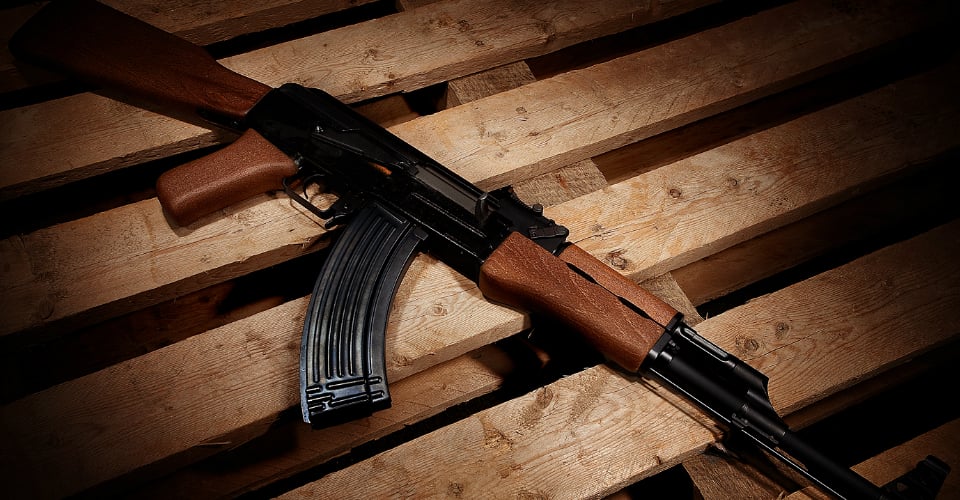One way to look at a 60-year-old, battle-worn M1 U.S. service rifle is as a cherished historical relic unfit for any duty more rigorous than color guard. Another way is as a military-grade firearm likely to be snatched up by street toughs and used for common crime. Over the past six years, the Obama administration has seen the gun both ways, leading to a saga that has incensed legislators and gun collectors alike.
Helpfully for the executive branch, Republican Rep. Cynthia Lummis of Wyoming filed the “Collectible Firearms Protection Act” last month. While Lummis’s bill sounds wide-ranging, it actually targets a strange and singular quandary that’s given the State Department fits since 2009: What to do with almost a million vintage, American-made M1 Garand and Carbine rifles now moldering in the arsenals of their custodian, South Korea.
“Legislation shouldn’t even be needed for U.S. citizens to purchase perfectly legal and regulated firearms, especially in this case, with storied, American-made rifles that are pieces of U.S. military history,” Rep. Lummis said in a statement. In fact, legislation wouldn’t be necessary if President Obama were okay with the purchase, which in this case, his administration was in favor of. Until it wasn’t.
During the Cold War, the U.S. provided hundreds of thousands of M1 rifles to South Korea, which used them for 50 years before deciding to upgrade. To defray this cost, the Korean government wants to sell the M1s to American citizens. This involves not a little bit of chutzpah on the part of the Koreans, considering that most, if not all of the rifles, were gifts from America. U.S. collectors don’t seem to mind — they’re desperate to buy the guns. The .30-caliber, semiautomatic M1 Garand was the standard-issue American service rifle from 1936 through 1957 — that is, during WWII — so while M1s have long since passed into military obsolescence, their value as collectibles has expanded with every new D-Day–themed movie, miniseries, and Ken Burns special. Today, most of the M1s that are still available in the U.S. have had multiple components replaced or are otherwise adulterated. But the rare M1 Garand that just has most of its original parts can easily command $4,000 or more. Which means that the M1s that South Korea is sitting on amount to a gold mine.

And the South Koreans know it. Back in 2007, the country began the tedious process of asking permission to send the M1s back to their motherland for sale on the U.S. private market. A patchwork of ’50s- and ’70s-era laws (originally meant to shield U.S. small-arms makers from foreign competition) prohibits reimport of U.S.-made military firearms unless they’re being sold to the U.S. armed forces or a law enforcement agency, or if the weapons are 50 or more years old. (Note: This applies only to small arms. If you can get the permits, you can buy a Sherman tank.) The M1s qualify under the second criteria, but when the import conditions are met, the State Department still has to approve the venture. Those final decisions can have major implications; President Reagan’s approval of a $13 million sale of 200,000 M1s to a U.S. gun shop has been cited by the Washington Post as sparking civilian America’s love affair with assault weapons.
In 2009, the executive branch was fine with the Korean arms plan, but it changed its mind in early in 2010, citing concerns that the guns could “be exploited by individuals seeking firearms for illicit purposes.” In 2011, the State Department reportedly began negotiations to import 86,000 South Korea–held Garands — but not the carbines, which can accept a bigger magazine — and the Korean press announced this as a done deal.
But in August 2013, Obama reversed course again. With an executive order banning reimportation of the M1s, the president publicly embraced the argument that an infusion of 10-pound, three-and-a-half-foot-long, 60-year-old wooden rifles could endanger American citizens. “This new policy will help keep military-grade firearms off our streets,” read a news release. With a single stroke, Obama scribbled out all previous strokes and ended the dream of a million old-yet-new M1 rifles entering the U.S. market.
The State Department declined to comment for this article, citing Lummis’s pending legislation.
Lawmakers have fought back to no avail. Back in 2011, Republican Sen. Rand Paul of Kentucky launched an online survey to tally outrage over “President Obama’s Million Rifle Ban,” which conveniently provided Sen. Paul with respondents’ contact information for future communiqués. And in June, Rep. Lummis filed her “Collectible Firearms Protection Act” — again. She’s submitted identical bills three times before, but while prior incarnations garnered bipartisan support and matching Senate legislation, all died in committee.
Rep. Lummis, in a statement provided to The Trace, says, “This is simply a political stunt on the part of the State Department to deny law-abiding citizens, firearm collectors, and competitive marksmen the exercise of their Second Amendment rights. The State Department has no business blocking domestic firearm ownership, and my bill will make sure it stops.”
Maybe, but not while the Obama administration has made up its mind. For the time being, the saga of the M1 rifle isn’t anywhere near its end.
[Photo: Library of Congress]

